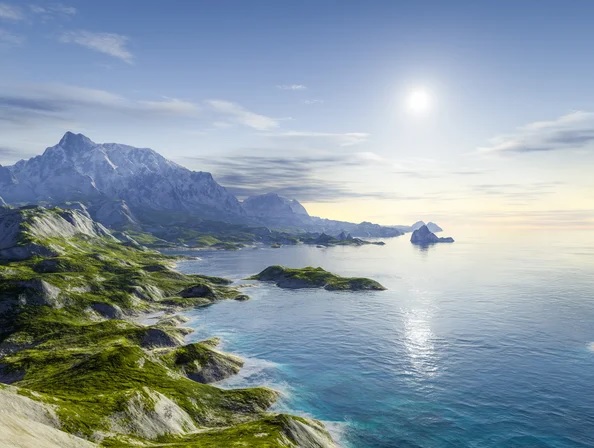Adriatic Sea
The Adriatic Sea is a narrow body of water that stretches from the northwest to the southeast, starting from the Gulf of Venice and extending to the Strait of Otranto. This sea is flanked on its western side by parts of the Italian Peninsula, notably the regions of Venetia, The Papal States, the Kingdom of Naples, and the southern tip of the Apennine Mountains. To the east, it is bounded by the Dalmatian coast, which is characterized by a rugged coastline with many islands, bays, and inlets. The eastern coast is controlled by the Ottoman Empire.
Contents
The Adriatic is scattered with numerous islands. Most of these are located off the Dalmatian coast. Larger islands, such as Krk, Brač, Korčula, and Dugi Otok, stand out prominently, while a multitude of smaller islands and islets dot the sea, especially in the region known as Kvarner Bay. Several rivers flow into the Adriatic, providing fresh water. Notably, the Po River, one of the most significant rivers in Italy, empties into the northern part of the Adriatic near the Venetian lagoon. Other rivers, like the Drin and Neretva, come from the eastern side, flowing down from the Balkan lands.
The waters of the Adriatic are clear, especially in its southern and deeper parts. Averaging 100 mi. wide, the depth of the sea varies from 150 ft. in the north to a low of 600 ft. at the mid-point. The predominant wind in the Adriatic, the Bora, originates in the northeast and plays a significant role in shipping. This wind is known for its sudden and violent gusts, which can develop suddenly and turn a calm sea into a raging tempest in a matter of minutes.
Coastal Features
The Adriatic coastline varies greatly. In the north, the coast is relatively low and marshy, particularly around the Venetian region. As one moves southward, the coastline becomes more rugged, especially on the eastern side. The Dalmatian coast is particularly known for its steep cliffs, deep bays, and rocky shores. At its southern edge, through the Strait of Otranto, the Adriatic connects with the Ionian Sea.
Bays and inlets provide shelter for ships and have been natural spots for establishing settlements. There are several prominent peninsulas jutting into the Adriatic, the most notable of which is the Istrian, which has long been a cultural and geographic bridge between the Slavic and Italian worlds.
Trade
The Adriatic Sea is a conduit for trade and movement. The northern corner communicates with Central and Eastern Europe, while the southern parts provide passage for merchants between Greece and southern Italy. Trade moving up the Adriatic made Venice phenomenally rich in the 12th to 15th centuries.
There are as many as 35 market ports located around the body of water; the most important are Brindisi, Bari, Barletta, Ancona, Rimini, Venice, Fiume, Sebenico, Spalato and Ragusa.
